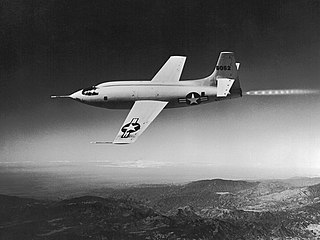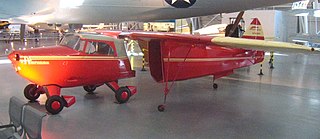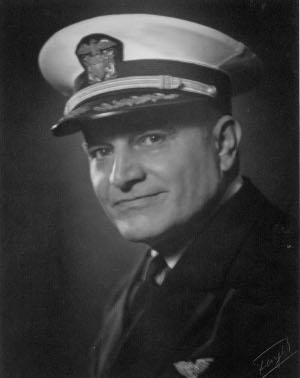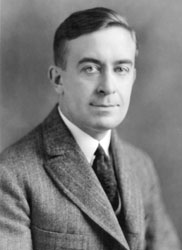Aircraft designs

- Cunningham-Hall PT-6
- Cunningham-Hall X-89 "Mystery Ship" Biplane, with small-chord upper wing. [4]
- Cunningham-Hall X-90
- Cunningham-Hall GA-21M

| Founded | 1928 in Rochester, New York, United States |
|---|---|
| Founder | Randolph F. Hall, James Cunningham |
| Defunct | 1948 |
| Fate | dissolved |
| Headquarters | , |
| Products | aircraft |
The Cunningham-Hall Aircraft Corporation was an American aircraft manufacturer from its formation in 1928 to its closure in 1948.
The company was formed in 1928 at Rochester, New York. [1] It was a combination of Randolph F. Hall, as vice president, some former employees of Thomas-Morse Aircraft Corporation and James Cunningham, Son and Company who manufactured motor cars. [2] Francis E. Cunningham was President. [3] The company built five different aircraft designs, most were only built in single numbers or no more than prototypes. The last design appeared in 1937 and the company concentrated on sub-contract component production before it was dissolved in 1948.



The Douglas Aircraft Company was an American aerospace and defense company based in Southern California. Founded in 1921 by Donald Wills Douglas Sr., it merged with McDonnell Aircraft in 1967 to form McDonnell Douglas, where it operated as a division. McDonnell Douglas merged with Boeing in 1997.

The Bell X-1 is a rocket engine–powered aircraft, designated originally as the XS-1, and was a joint National Advisory Committee for Aeronautics–U.S. Army Air Forces–U.S. Air Force supersonic research project built by Bell Aircraft. Conceived during 1944 and designed and built in 1945, it achieved a speed of nearly 1,000 miles per hour in 1948. A derivative of this same design, the Bell X-1A, having greater fuel capacity and hence longer rocket burning time, exceeded 1,600 miles per hour in 1954. The X-1 aircraft #46-062, nicknamed Glamorous Glennis and flown by Chuck Yeager, was the first piloted airplane to exceed the speed of sound in level flight and was the first of the X-planes, a series of American experimental rocket planes designed for testing new technologies.

The Bell Aircraft Corporation was an American aircraft manufacturer, a builder of several types of fighter aircraft for World War II but most famous for the Bell X-1, the first supersonic aircraft, and for the development and production of many important civilian and military helicopters. Bell also developed the Reaction Control System for the Mercury Spacecraft, North American X-15, and Bell Rocket Belt. The company was purchased in 1960 by Textron, and lives on as Bell Textron.

Wright Aeronautical (1919–1929) was an American aircraft manufacturer headquartered in Paterson, New Jersey. It was the successor corporation to Wright-Martin. It built aircraft and was a supplier of aircraft engines to other builders in the golden age of aviation. Wright engines were used by Amelia Earhart and Charles Lindbergh. In 1929, the company merged with Curtiss Aeroplane and Motor Corporation to form Curtiss-Wright.

The Spirit of St. Louis is the custom-built, single-engine, single-seat, high-wing monoplane that Charles Lindbergh flew on May 20–21, 1927, on the first solo nonstop transatlantic flight from Long Island, New York, to Paris, France, for which Lindbergh won the $25,000 Orteig Prize.

The Steven F. Udvar-Hazy Center, also called the Udvar-Hazy Center, is the Smithsonian National Air and Space Museum (NASM)'s annex at Dulles International Airport in the Chantilly area of Fairfax County, Virginia. It holds numerous exhibits, including the Space Shuttle Discovery, the Enola Gay, and the Boeing 367-80, the main prototype for the popular Boeing 707 airliner.

The Fulton FA-2 Airphibian is an American roadable aircraft manufactured in 1946.

Air launching is the practice of releasing a rocket, missile, parasite aircraft or other aircraft payload from a mother ship or launch aircraft. The payload craft or missile is often tucked under the wing of the larger mother ship and then "dropped" while in flight. It may also be stored within a bomb bay, beneath the main fuselage or even on the back of the carrier aircraft, as in the case of the D-21 drone. Air launching provides several advantages over ground launching, giving the smaller craft an altitude and range boost, while saving it the weight of the fuel and equipment needed to take off on its own.

The Liberty L-8 was a prototype of the Liberty L-12 engine designed by Jesse Vincent and Elbert Hall. Fifteen L-8 prototypes were manufactured by several companies including Buick, Ford, Lincoln, Marmon, and Packard in 1917. The first of those built now resides in the National Air and Space Museum in Washington, D.C., while fifteenth L-8 powers Liberty the Second housed by the Conneaut Lake Historical Society in Conneaut Lake, PA. Another L-8 is stored at the National Museum of the U.S. Air Force in Dayton, OH.

Paul Ernest Richter Jr. was an American aviation pioneer, co-founder of Standard Air Lines and executive vice president of Trans World Airlines (TWA), operations chief of staff of the Naval Air Transport Service during World War II and chairman of the board, president of TACA Airlines from 1947 to 1949.

The Virginia War Museum is located in Huntington Park on Warwick Blvd., Newport News, Virginia. The museum contains exhibits on American military history from 1775 to the present.

The Consolidated PT-1 Trusty is a biplane primary trainer used by the United States Army Air Service (USAAS) in the 1920s.

The Cunningham-Hall Model PT-6 was an American six-seat cabin biplane aircraft of the late 1920s and was the first design of the Cunningham-Hall Aircraft Corporation of Rochester, New York.

Charles Huron Kaman was an American aeronautical engineer, businessman, inventor, and philanthropist, known for his work in rotary-wing flight and also in musical instrument design via the Kaman Music Corporation.

The Fairchild FC-1 and its derivatives are a family of light, single-engine, high-wing utility monoplanes produced in the United States in the 1920s and 1930s. The aircraft was originally designed to provide a camera platform for Sherman Fairchild's aerial photography and survey business, Fairchild Aerial Surveys.

Alfred Victor Verville was an American aviation pioneer and aircraft designer who contributed to civilian and military aviation. During his forty-seven years in the aviation industry, he was responsible for the design and development of nearly twenty commercial and military airplanes. Verville is known for designing flying boats, military racing airplanes, and a series of commercial cabin airplanes. His planes were awarded with the Pulitzer Speed Classic Trophy in 1920 and 1924.
Janet Harmon Waterford Bragg was an American amateur aviator. In 1942, she was the first African-American woman to hold a commercial pilot license. She is a 2022 inductee to the Georgia Aviation Hall of Fame.

The Cunningham-Hall GA-21 was an American two-seat monoplane design to compete for the Guggenheim Safe Aircraft Competition in 1934. Its distinguishing feature was full span flaps which could be manually or automatically adjusted. The GA-36 was a military version of it with tandem, rather than side-by-side seating.

The Rocketdyne S-3D is an American liquid rocket engine produced by Rocketdyne between 1956 and 1961. It was a gas generator, pump-fed engine, using a liquid oxygen (LOX) and RP-1 (kerosene) propellant combination, capable of producing 134908 pounds of thrust at sea level.

James Blackstone Taylor III, also known as Jim Taylor, was an American aviation executive known for his work in corporate jet marketing, specifically the Pan Am Falcon, the Cessna Citation, the Canadair Challenger, and the Gates Learjet. Taylor served as president at Canadair from 1976 to 1985 and president and chief executive officer at Gates Learjet Corporation from 1985 to 1988.
{{cite journal}}: Missing or empty |title= (help)